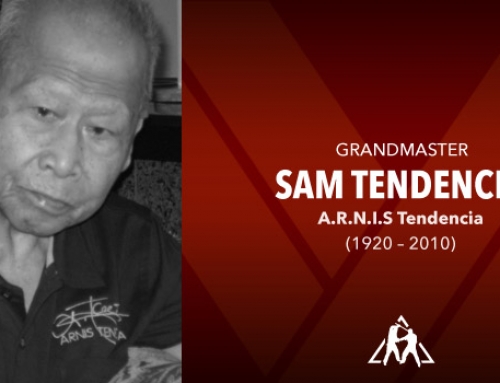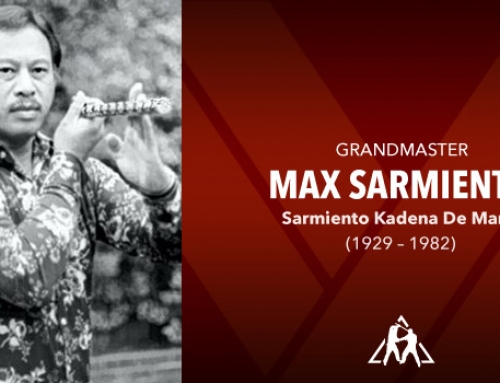Across a narrow straight from the site of Lapulapu’s historic battle on Mactan Island lies the island of Cebu. It is appropriate that here, so close to the battlefield, was found one of the most respected masters of Eskrima in the Philippines. Filemon De La Cuesta Canete, or “Momoy” as he was known to his friends and students, was born in1904.
He grew up in the San Fernando region of Cebu. It was there that he began his study of Eskrima as a teenager. The eight Canete brothers learned the rudiments of the art from their father Gregorio Canete.
More advanced training came from Lt. Pinyete Piano Aranas, a feared eskrimador in Cebu and other teachers such as Juan Tecson and Juaso Tekya who lived in the wild San Fernando mountains.
In 1920 Momoy began to study with Lorenzo Saveedra and his son Teodoro, who were considered among the top Eskrimadors in the Visayan region. In 1926, the Saveedras organized the Labongon Fencing Club. The Canetes were members for several years until the Club dissolved.
In 1932, the Canetes and the Saveedras founded the Doce Pares Club. The name Doce Pares means “Twelve Pairs” [of hands]. It was named after a group of fighting men in France during the reign of Charlemagne, all of whom were expert swordsmen.
It was during this period that Momoy began to gain recognition as the rare individual who can create new fighting forms by researching and synthesizing already existing methods. At age 22 he explored faith healing with Don Tecson, a famous Eskrimador and faith healer.
Later he studied Combat Judo with Jeseus Cui and blended its principles with his Eskrima. Momoy held the Saveedras foremost among his teachers. Indeed many of their students went on to create their own methods of Eskrima. In time Momoy went on to develop his own expression of Eskrima, a process that continued right up until his death in 1995.
As a healer, Momoy was well known in the barrios of Cebu City. Often during Eskrima practice he would pause to treat patients from the neighborhood with spiritual healing. He attributed his power to God and said that it was developed by concentrated prayer. As he treated people, he recited palabres (words or prayers).
Momoy was a true Master who valued medical skills and martial morality as much as martial ability. Although poor he seemed more interested in teaching and helping others, than in wealth and fame. His son, grandson, and students are left to continue his legacy.
Note: Much of this information comes from conversations with Master Eulogio Canete in 1984. I thank him for his patience in instructing me in the history of the Doce Pares Club.
Tom Bisio -1998
Tribute to GM Filemon ” Momoy” Canete






















Leave A Comment
You must be logged in to post a comment.